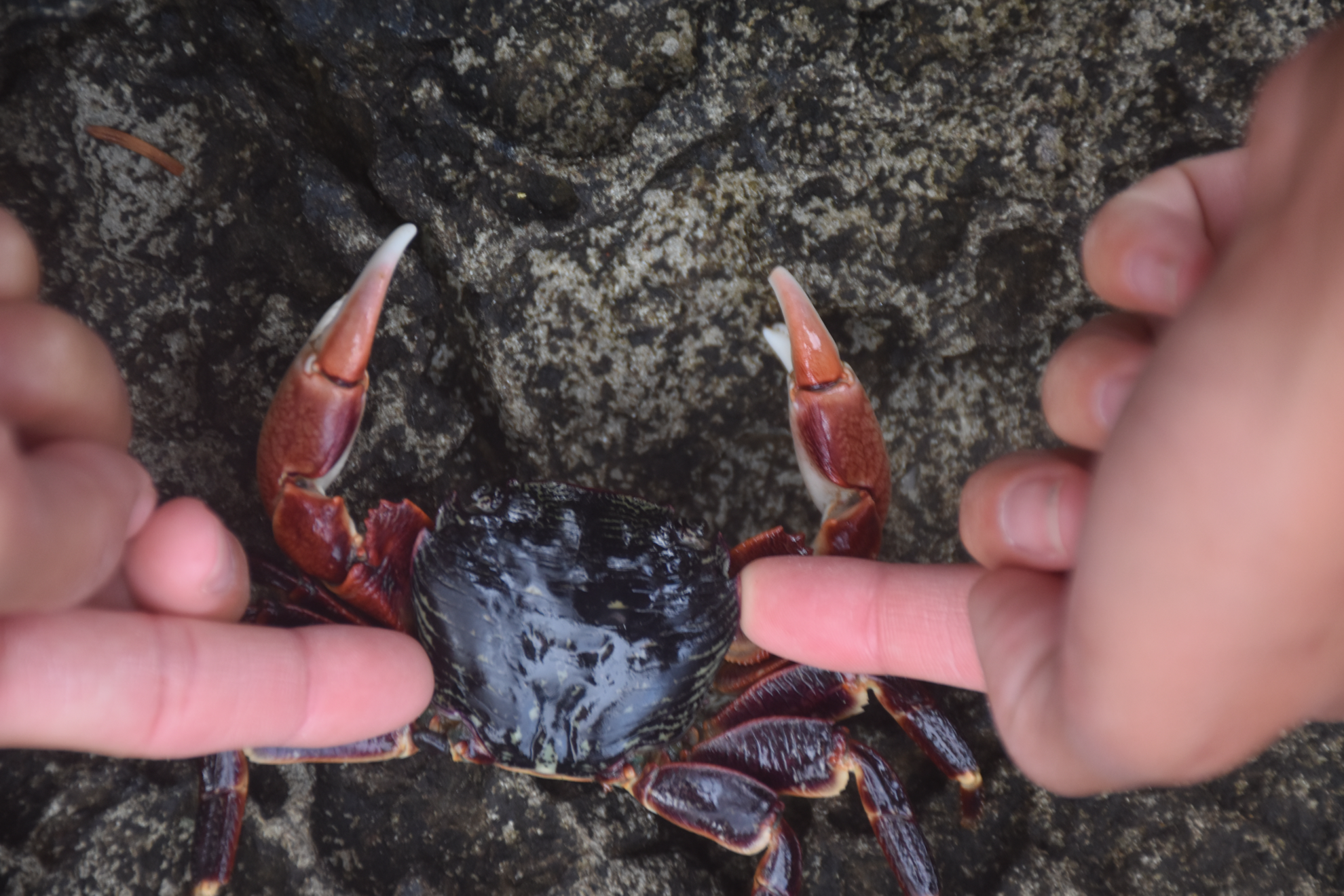Pachygrapsus crassipes Randall, 1839Common name(s): Lined shore crab, striped shore crab |
|
| Synonyms: | 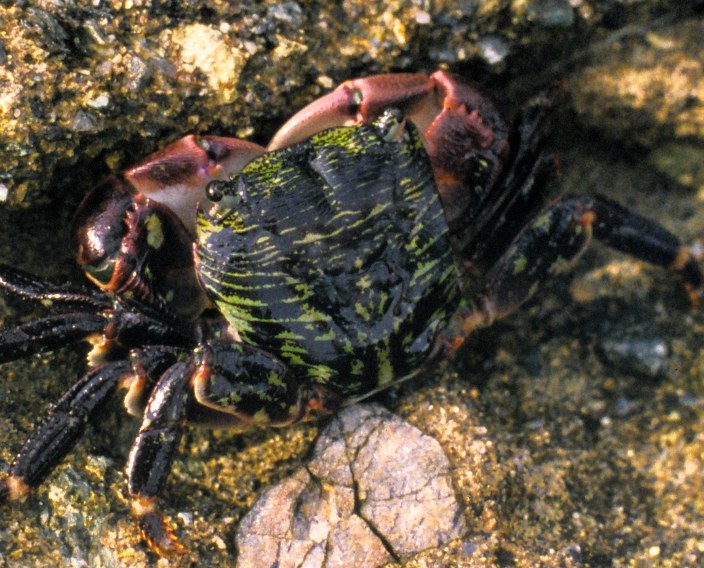 |
| Phylum Arthropoda
Subphylum Crustacea Class Malacostraca Subclass Eumalacostraca Superorder Eucarida Order Decapoda Suborder Pleocyemata Infraorder Brachyura (true crabs) Section Brachyrhyncha Family Grapsidae |
|
| Pachygrapsus crassipes from Laguna Beach, CA. Carapace width about 3 cm. | |
| (Photo by: Dave Cowles May 1998) | |
How to Distinguish from Similar Species: Both Hemigrapsus nudus and H. oregonensis have three teeth on the anterolateral margin of the carapace, plus do not have the transverse lines on the carapace.
Geographical Range: Charlston, Oregon to Isla de Santa Margarita, Baja California, + Gulf of California, Japan, Korea (it may have been introduced to Asia)
Depth Range: High and mid intertidal
Habitat: Crevices, under rocks, in tidepools and mussel beds. Sometimes in clay burrows, especially in San Francisco Bay.
Biology/Natural History: This crab can be very abundant in its range. It is the most semi-terrestrial of the shore crabs, living highest in the intertidal. Forages in and out of the water, active during the day. They spend at least half their time out of water but return periodically to pools to moisten their gills. They are osmoregulators, and can withstand hypo- and hyperosmotic conditions. It feeds on films of algae and diatoms, which it scrapes off the rocks with the tips of its chelae. May also eat small green algae Ulva and Enteromorpha, brown algae Fucus, and red Endocladia, Rhotoglossum, and Grateloupia. Occasionally eats dead animals or small intertidal invertebrates, and has especially been noted eating limpets. Predators include gulls, raccoons, anemones, and fish. Ovigerous females are found from March to September in central California; peak reproduction is in June and July.
In central Japan this species can be parasitized by any
of
three sympatric
sacculinid barnacles, Sacculina confragosa, S.
imberbis,
or S. yatsui (Tsuchida et al., 2006).
| Return to: | |||
| Main Page | Alphabetic Index | Systematic Index | Glossary |
References:
Dichotomous Keys:Kozloff 1987, 1996
Smith and Carlton, 1975
Wicksten, 2009
General References:
Brandon
and Rokop, 1985
Kozloff,
1993
Morris
et al., 1980
Niesen,
1994
Sept,
1999
Scientific Articles:
López-Duarte, Paola C., Henry S. Carson, Geoffrey S. Cook, F. Joel Fodrie, Bonnie J. Becker, Claudio DiBacco, and Lisa A. Levin, 2012. What controls connectivity? An empirical, multi-species approach. Integrative and Comparative Biology 52:4 pp. 511-524
Sjoboen, A. D., Dunbar, S.G., and Boskovic, D. 2010. Temporal fluctuations of fatty acids in Pachygrapsus crassipes from Southern California. Journal of Crustacean Biology. 30(2): 257 – 265
Tsuchida, Kohei, Jorgen Lutzen, and Mutsumi Nishida, 2006. Sympatric three-species infection by Sacculina parasites (Cirripedia: Rhizocephala: Sacculinidae) of an intertidal grapsoid crab. J. Crustacean Biology 26:4 474-479
General Notes and Observations: Locations, abundances, unusual behaviors:
Note: This grapsid crab likes to pinch, and can readily draw blood! It is more likely to do so than are the Hemigrapsus species.
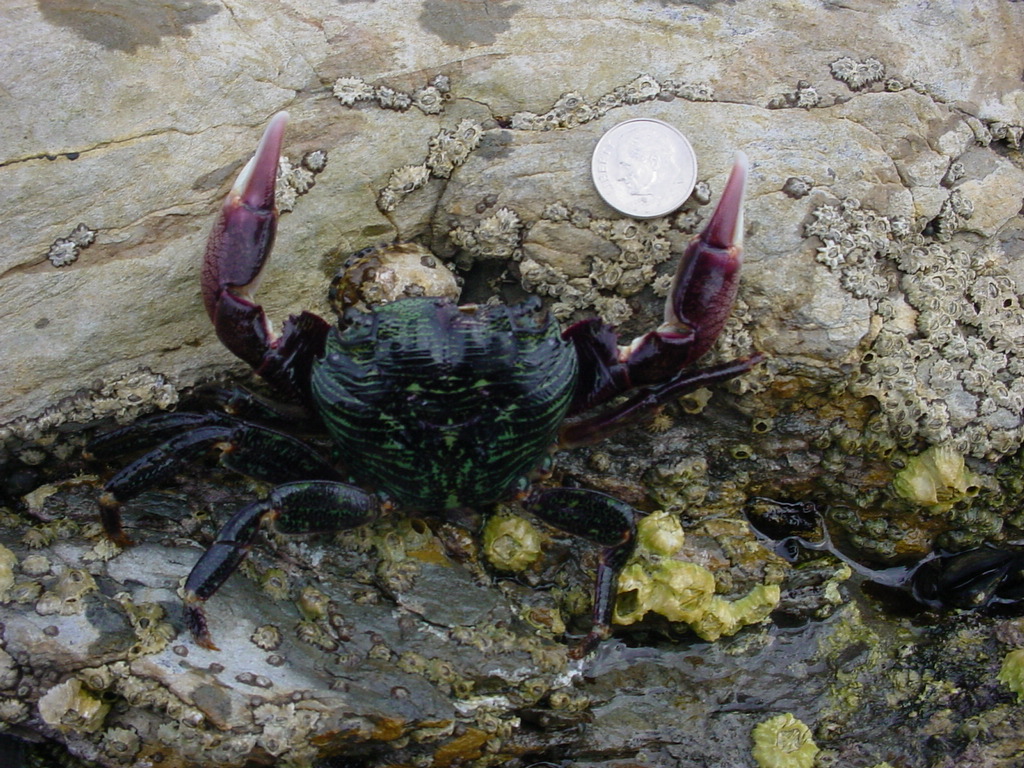
Another individual, at Little Corona del Mar, CA. Photo by
Dave
Cowles March 2005

The underside of this male shows the lack of spots on the chela,
the two anterolateral
teeth on the carapace
behind the eye, and the setae
on the legs.
Photo by Dave Cowles, Little Corona del Mar, March 2005
| In July 2007 we found the individual below intertidally on Cape Flattery. It is clearly recognizable as a female Pachygrapsus crassipes though it is hundreds of miles north of its reported range. Photos were taken by Tyler Shelton | |
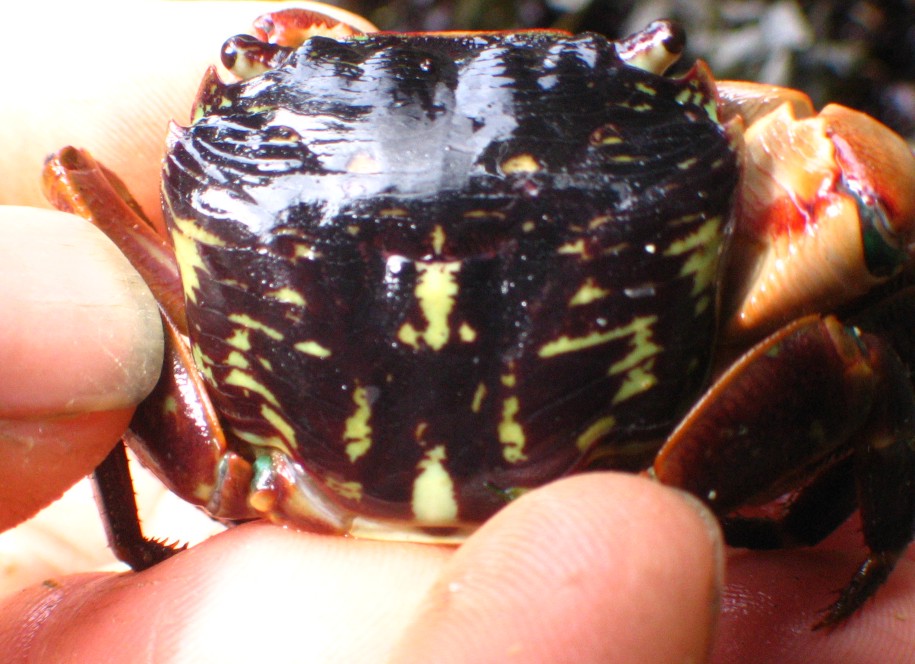 |
 |
| The two views above clearly show the transverse lines on the carapace and the purplish red and greenish barred color characteristic of Pachygrapsus crassipes. | |
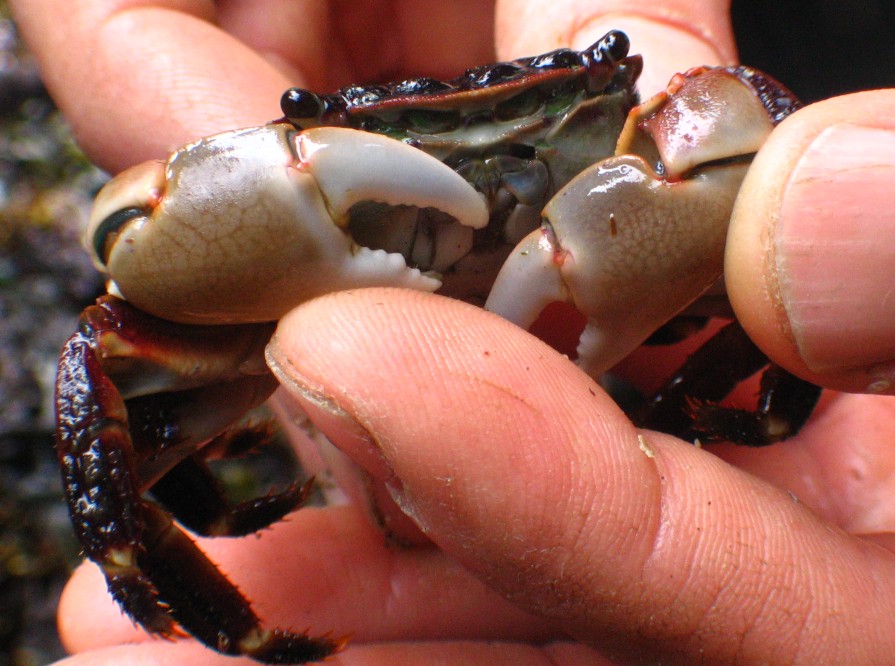 |
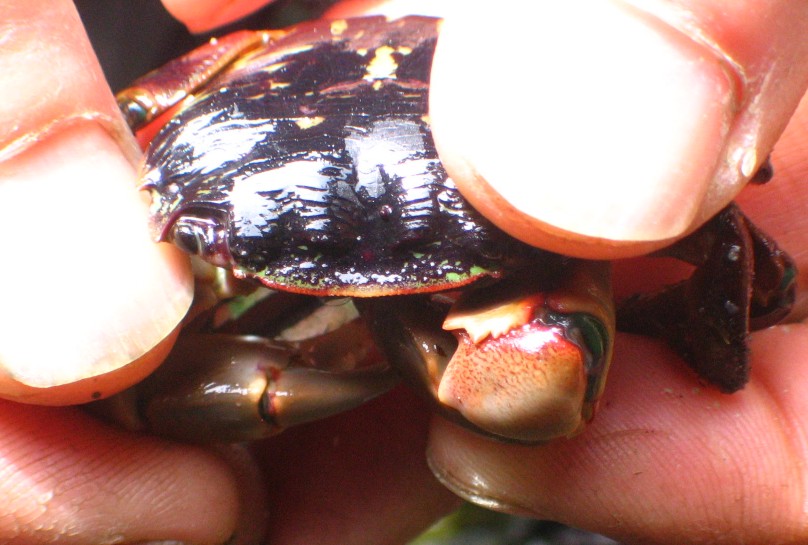 |
| There are no purple spots on the propodus of the chelae and there are abundant setae on the legs. Both of these characteristics distinguish this individual from Hemigrapsus nudus. | The carapace has only 2 anterolateral teeth (characteristic of Pachygrapsus) instead of the 3 characteristic of Hemigrapsus. |
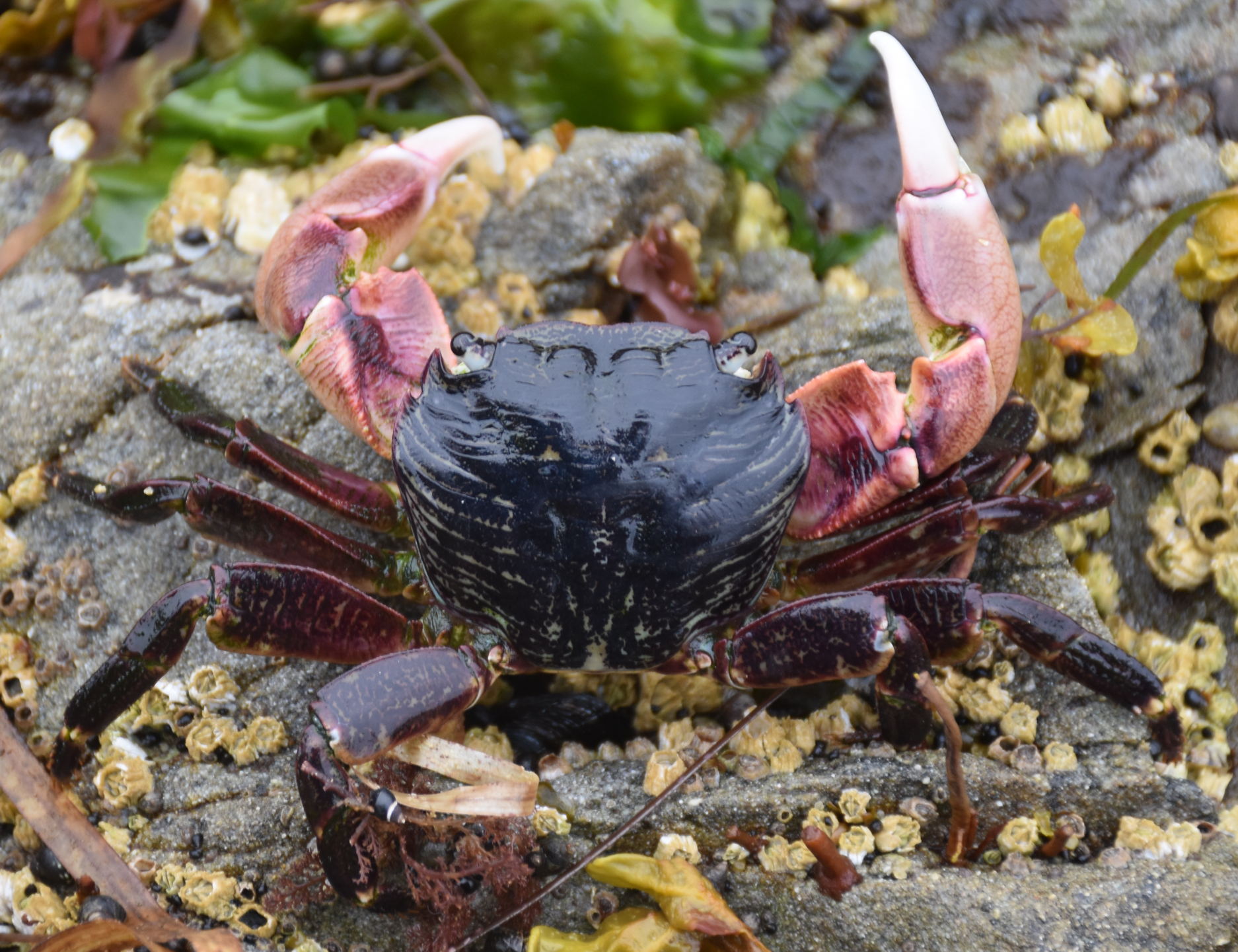 |
 |
| Although this crab species is seldom found north of central Oregon, in July 2020 I found this individual at Cape Alava, WA. Photos by Dave Cowles | |
Authors and Editors of Page:
Dave Cowles (2005): Created original page
